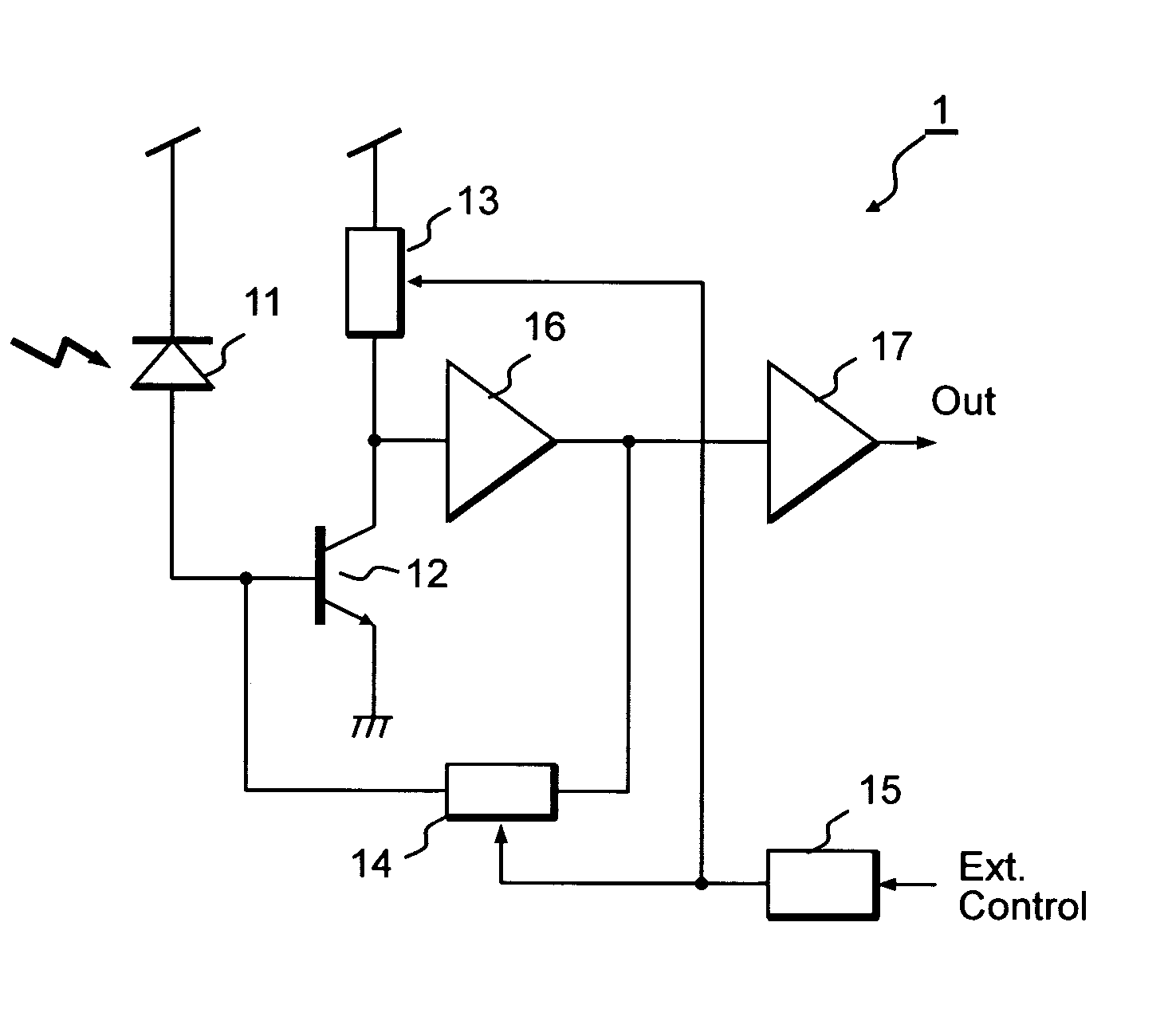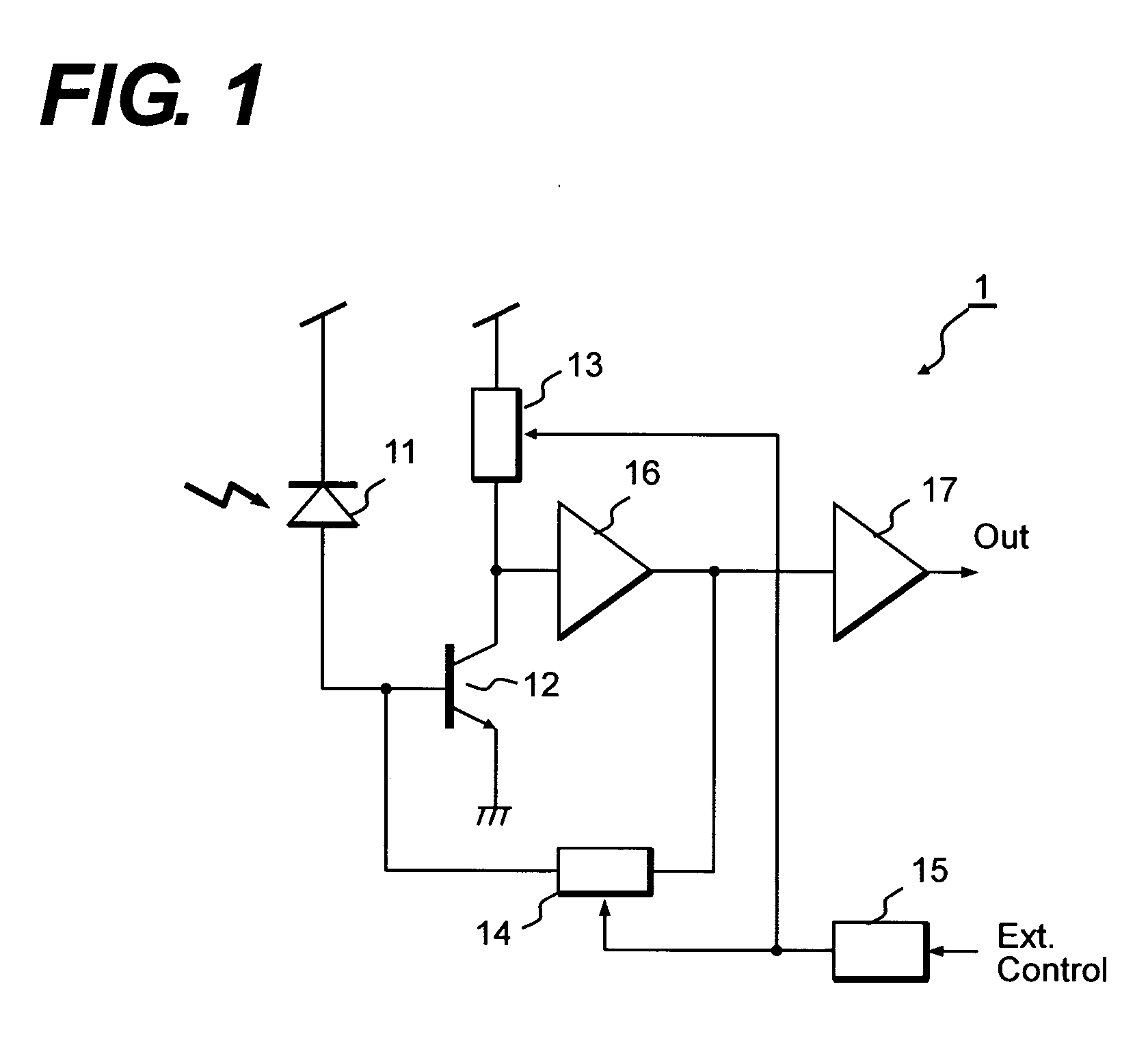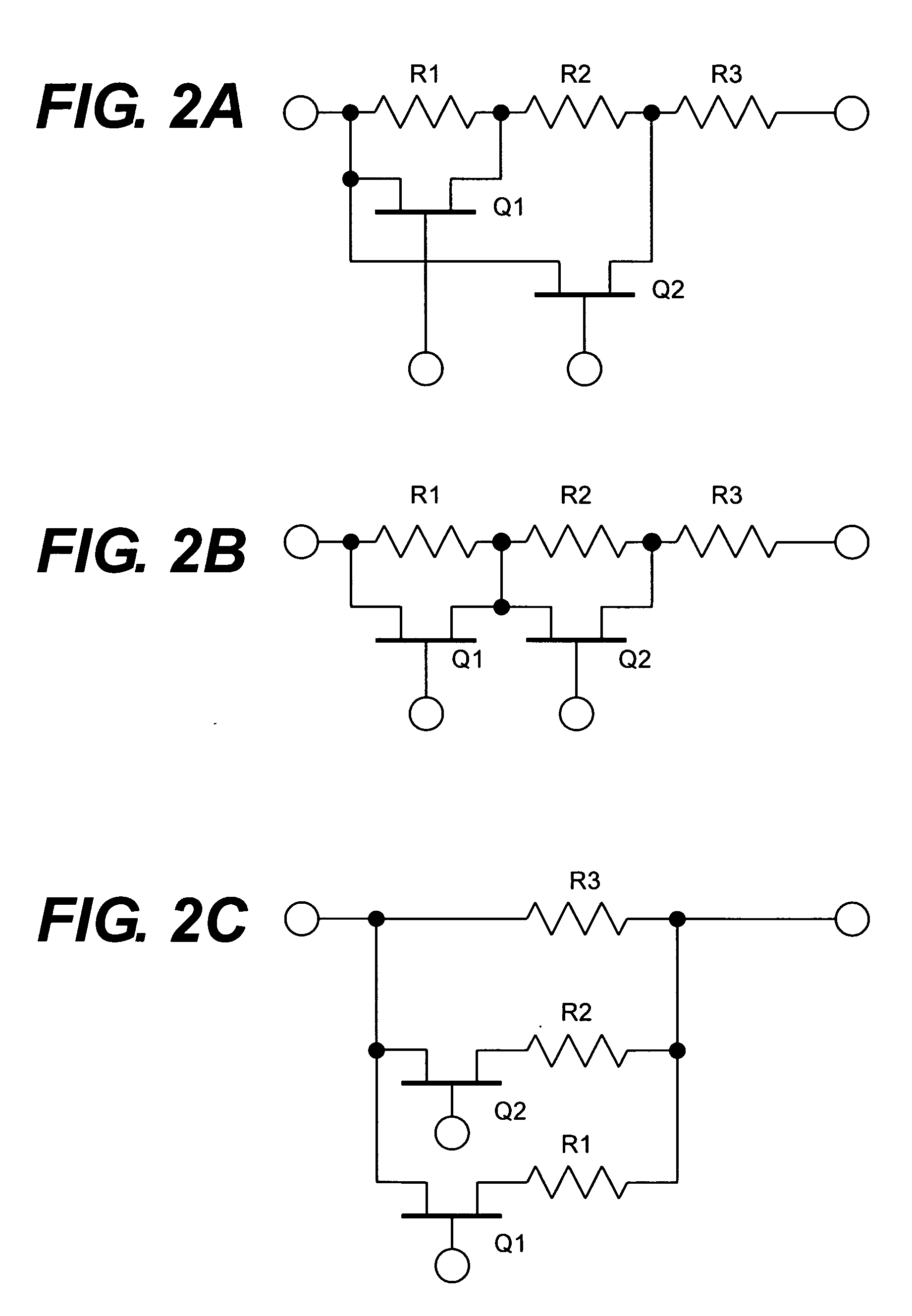Pre-amplifier for an optical communication
a technology of optical communication and amplifier, which is applied in the direction of amplifiers with semiconductor devices only, amplifiers with semiconductor devices, amplifiers, etc., can solve the problems of reducing the gain of the amplifier, and affecting the signal quality of the output signal
- Summary
- Abstract
- Description
- Claims
- Application Information
AI Technical Summary
Benefits of technology
Problems solved by technology
Method used
Image
Examples
first embodiment
[0038]FIG. 1 shows a block diagram of a pre-amplifier 1 for the optical communication according to the present invention. The pre-amplifier 1 includes a transistor 12, which has a function of an inverting amplifier, a gain control circuit 13, a trans-impedance 14, a decoder 15, a level shifter 16, and an output buffer 17. This pre-amplifier, because of its intrinsic characteristic to convert an optical signal detected by a light-receiving device 11 to a corresponding electrical signal by current-to-voltage conversion, is used for the optical communication. The photo current generated by the light-receiving device 11 is input to the base of the transistor 12. The transistor 12 constitutes the gain control circuit 13 with a load resistance thereof and the gain control circuit decides the intrinsic gain of the pre-amplifier. The output of the gain control circuit 13 is adjusted in its level by the level shifter 16 to operate the trans-impedance 14. The output of the level shifter 16 is...
second embodiment
[0047]FIG. 3 explains a pre-amplifier 1a according to another embodiment of the present invention. This pre-amplifier 1a provides an output level detector 18 in addition to the elements involved in the previous pre-amplifier shown in FIG. 1. In this embodiment, the pre-amplifier 1a may be controlled in its gain and the bandwidth based on the signal detected by the output level detector 18 in addition to control of the gain control circuit 13a and the trans-impedance 14a by the information on the transmission speed.
[0048] The information on the transmission speed is simultaneously input to the gain control circuit 13a and the trans-impedance 14a, and the gain of the pre-amplifier and the trans-impedance may be varied in rough, while the output level detector 18 detects the output of the output buffer 17 and leads thus detected output level to the gain control circuit 13a and the trans-impedance 14a. The level detected by the output level detector 18 may be an average or a peak value...
third embodiment
[0058] Next, the third embodiment of the present invention will be described. FIG. 6 shows a block diagram of an optical receiver 1b according to the third embodiment. As shown in FIG. 6, the optical receiver 1b includes a control circuit 110, an optical fiber 120, a photodiode 130, a pre-amplifier 140, and a main amplifier 150.
[0059] The control circuit 110 outputs a bias signal to the photodiode 130 and the pre-amplifier 140 based on a control signal received outside of the optical receiver 1b. The control signal, when the optical receiver 1b has an interface to a host system, which is not shown in FIG. 6, such as a small form factor pluggable transceiver (SFP), may be a signal output from the host system. The control signal may include information on the transmission speed. Therefore, the control circuit 110 may output the bias signal corresponding to the transmission speed.
[0060] The photodiode 130 receives light output from the optical fiber 120 and converts the light into an...
PUM
 Login to View More
Login to View More Abstract
Description
Claims
Application Information
 Login to View More
Login to View More - R&D
- Intellectual Property
- Life Sciences
- Materials
- Tech Scout
- Unparalleled Data Quality
- Higher Quality Content
- 60% Fewer Hallucinations
Browse by: Latest US Patents, China's latest patents, Technical Efficacy Thesaurus, Application Domain, Technology Topic, Popular Technical Reports.
© 2025 PatSnap. All rights reserved.Legal|Privacy policy|Modern Slavery Act Transparency Statement|Sitemap|About US| Contact US: help@patsnap.com



